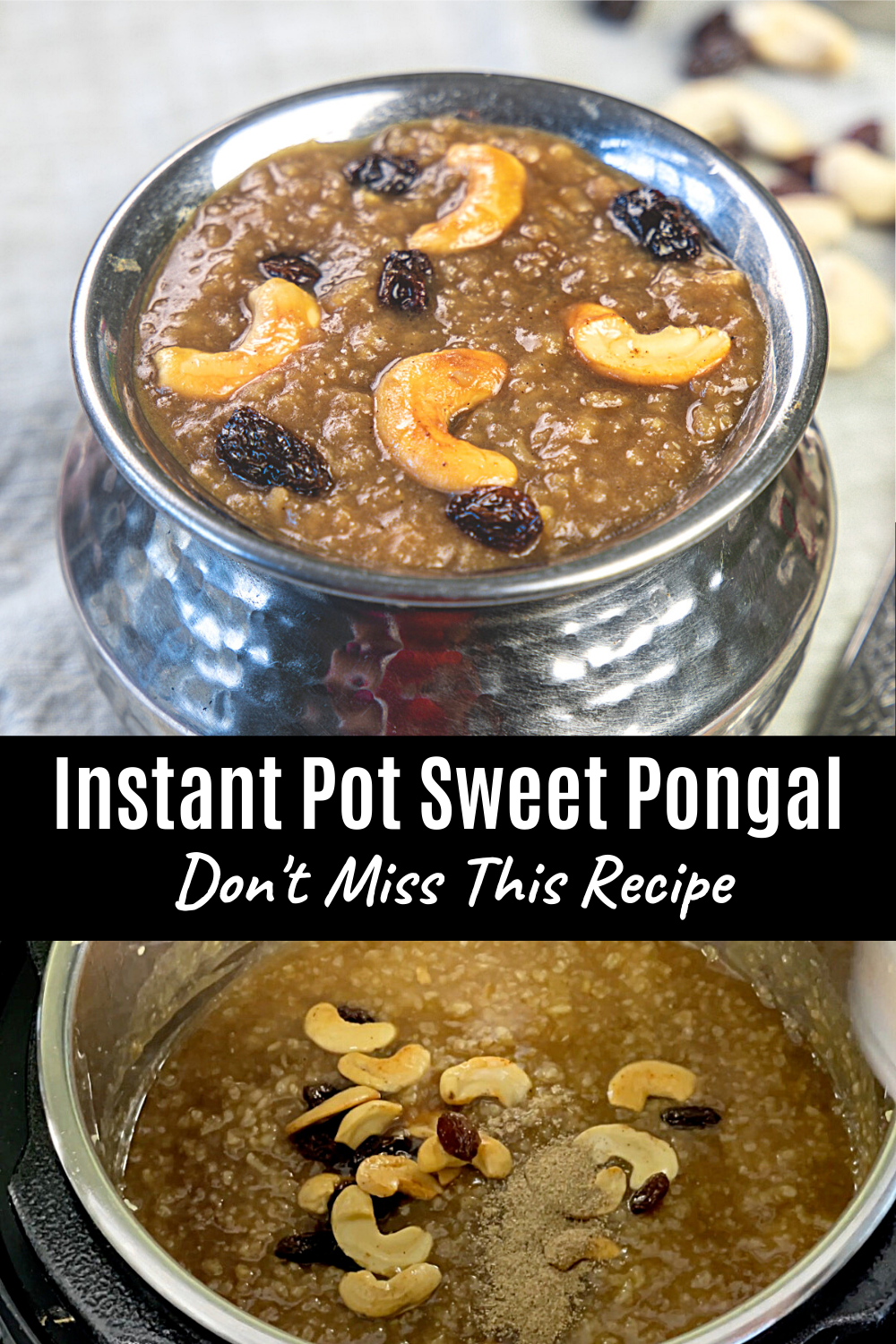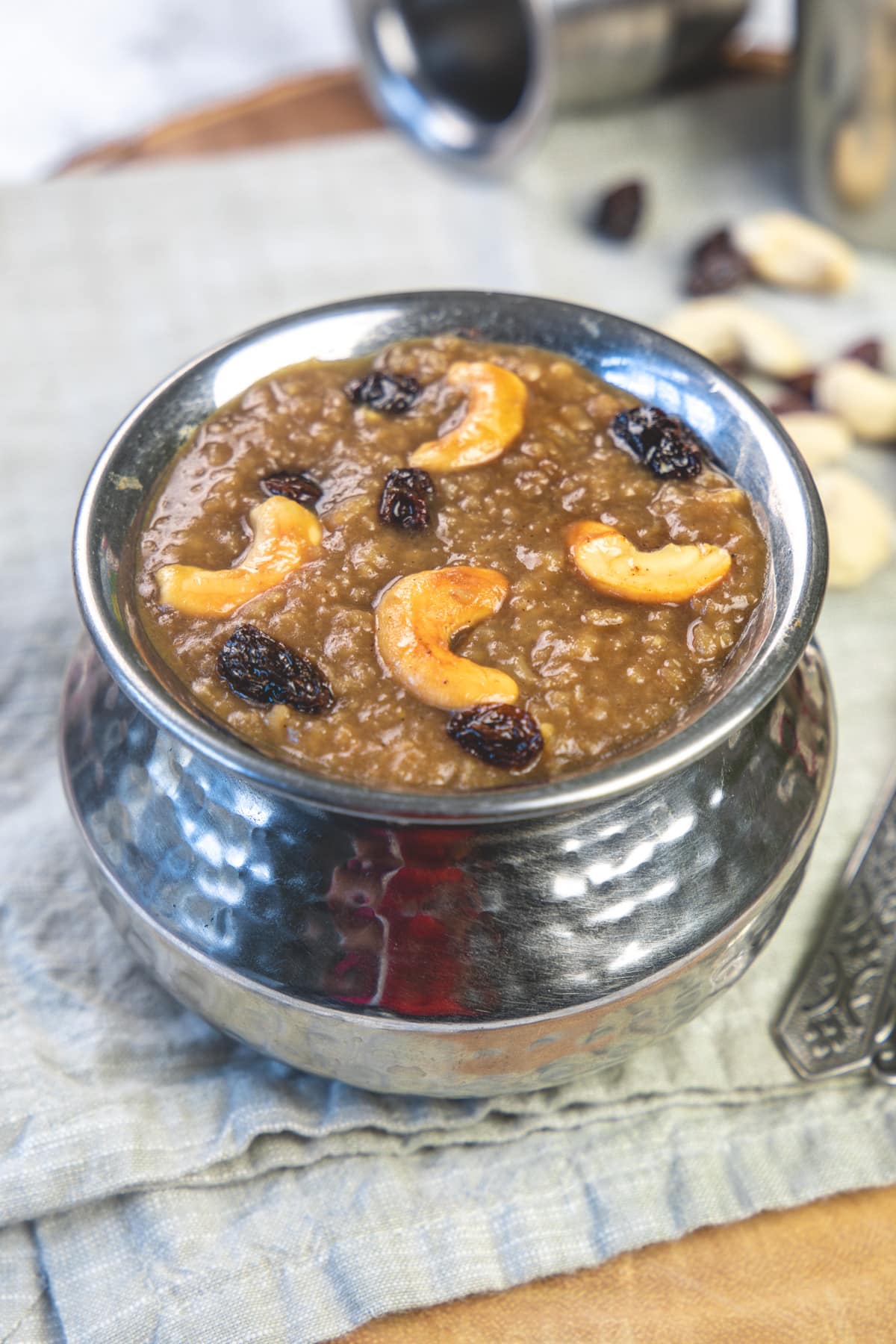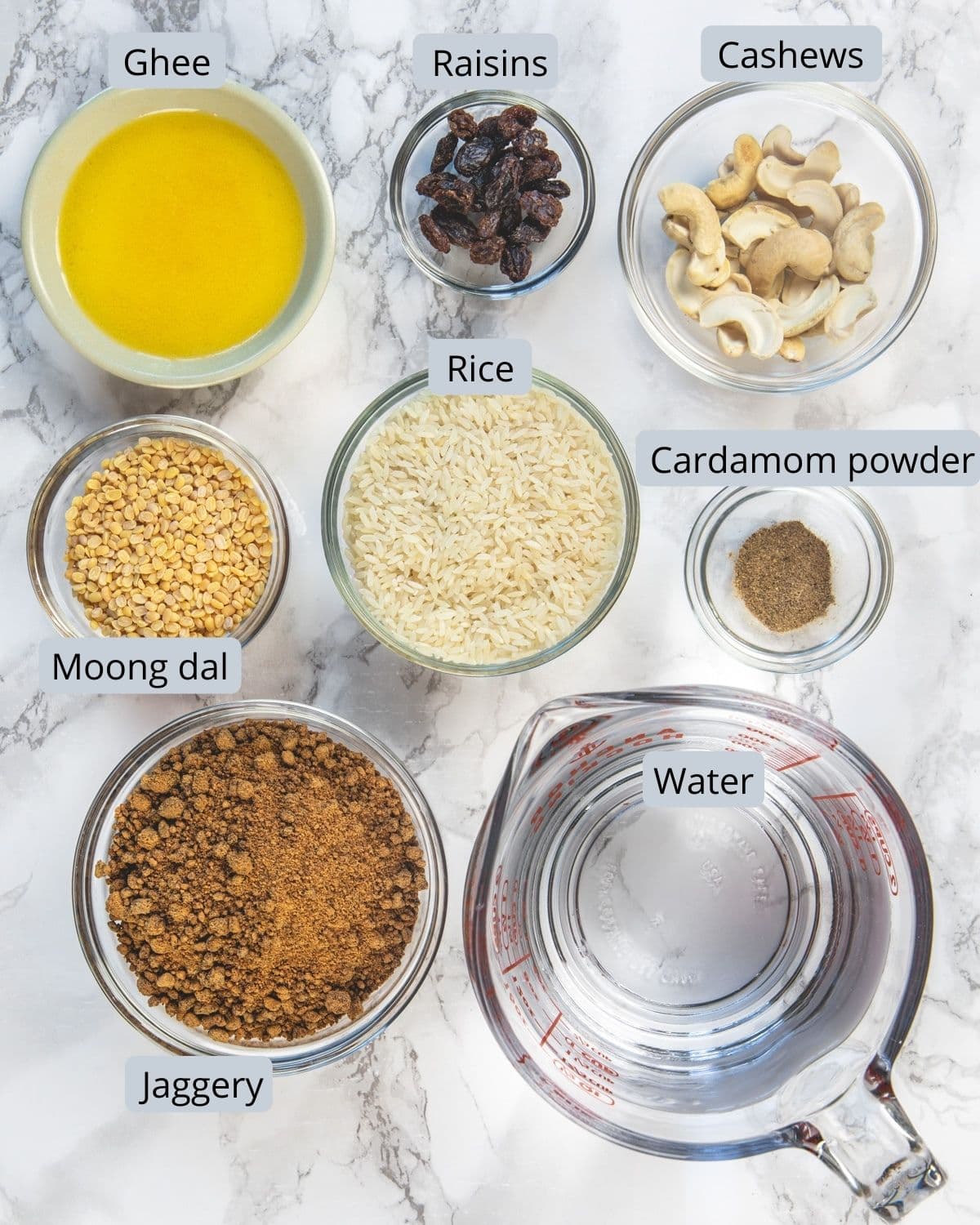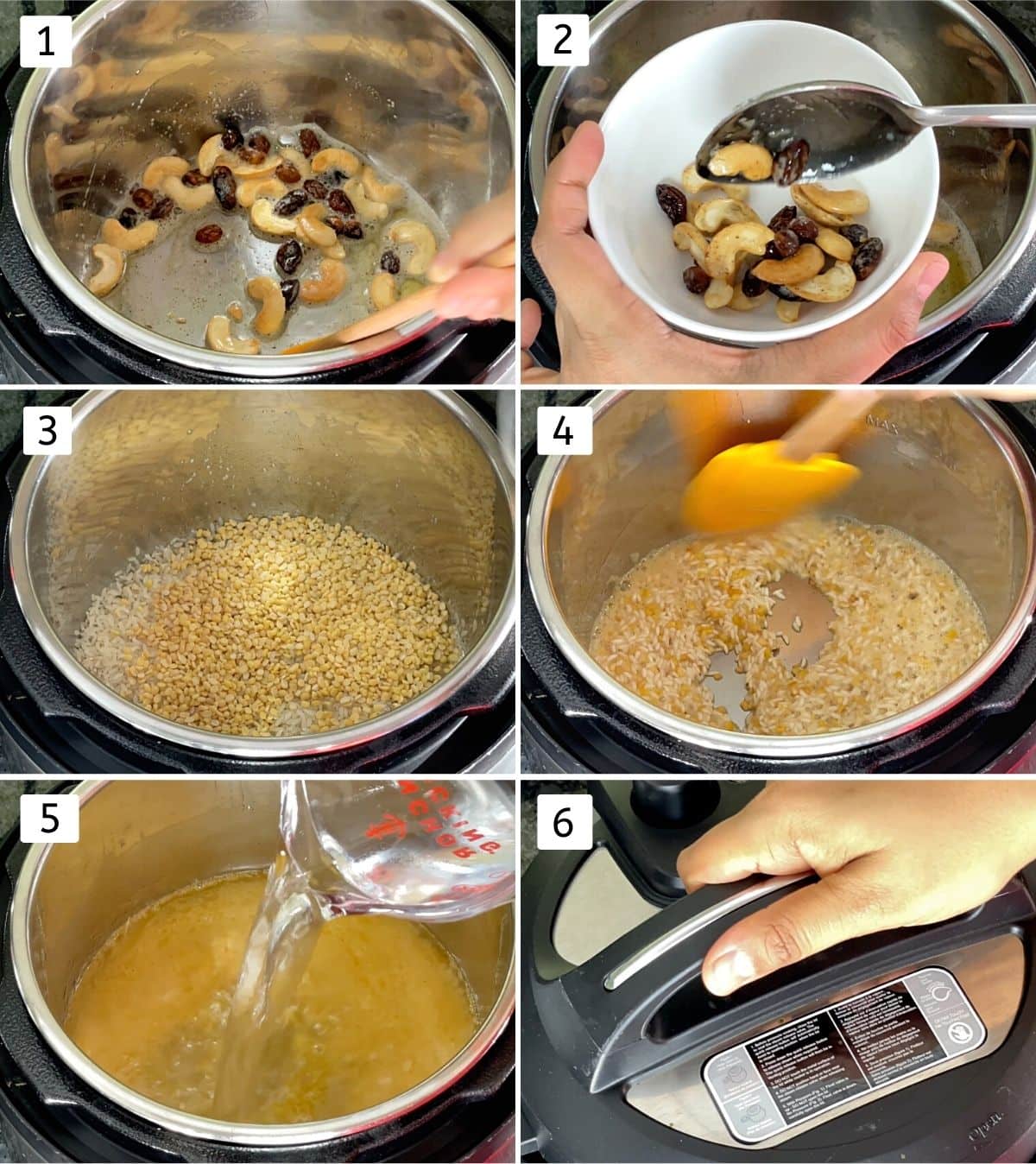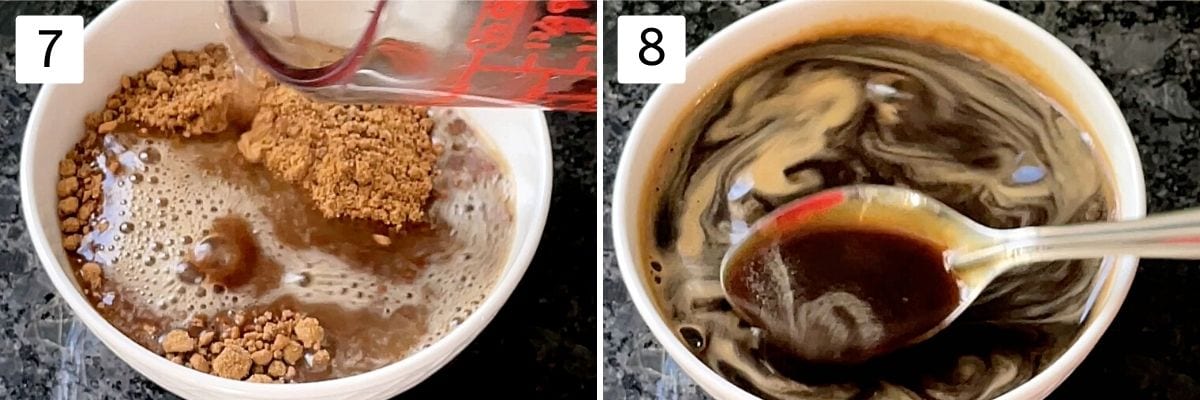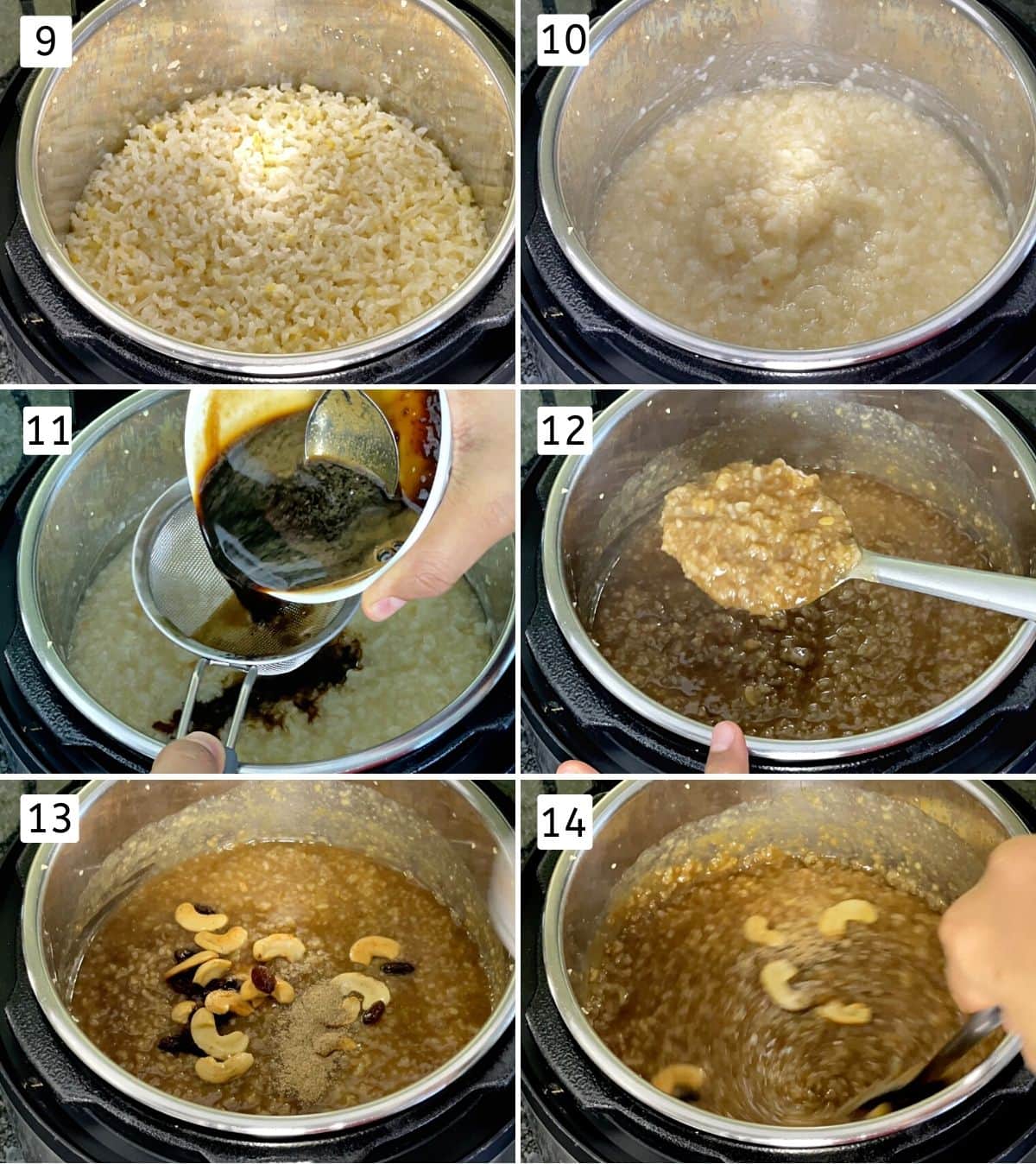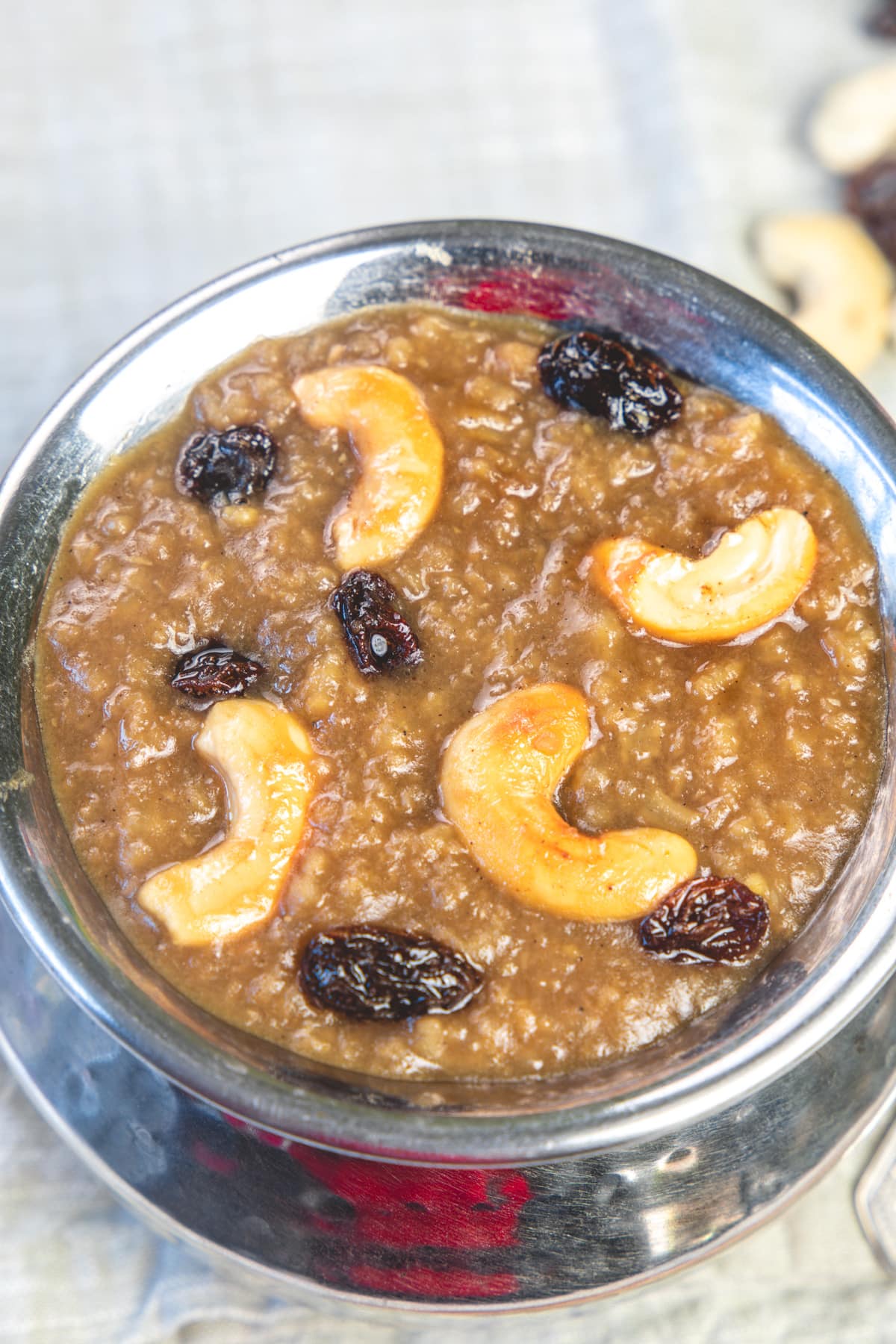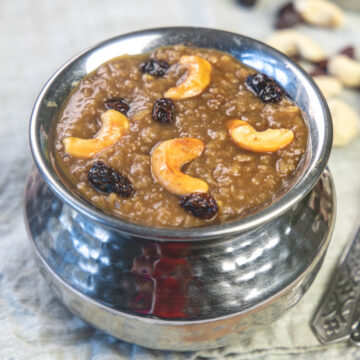It is called Sakkarai pongal in Tamil and Chakkara pongali in Telugu.
❤️ You’ll Love This Sweet Pongal Recipe
Taste & Texture: It is rich and sweet (molasses-like flavor) with a loose, porridge-like texture. Color of the dish: It can be dark or light brown depending on the type and brand of jaggery you have used. Also, depends on if you are using milk or water to make sweet pongal. Meaning: Sakkarai or Chakkara means jaggery. Pongal means boiling or bubbling. Traditionally sweet pongal is made by boiling milk/water in a bronze pot (matka shaped) and also allowed to overflow. Then rice and moong dal are added and cooked until soft and mushy. Jaggery syrup is added and finished off with ghee and dried fruits. The traditional method is a little time-consuming plus, you need to babysit by stirring it occasionally. But this instant pot sweet pongal recipe is quick and authentic-tasting.
When To Make Sakkarai Pongal?
It is made on Makara Sankranthi or Pongal (a harvest festival) in many South Indian homes. You’ll see little variations based on the family traditions, customs and regions. The pongal is prepared using freshly harvested rice to signify and celebrate abundance and prosperity after harvest. Other than Pongal festival, it is also made on auspicious days, house warming, baby shower, and many other festivals. You’ll find this sakkarai pongal or chakkara pongali in many South Indian temples as an offering to the god. Along with this, ven pongal, curd rice, tamarind rice are also offered and then distributed to devotees.
🧾 Ingredient Notes
Rice: Any short to medium grain rice variety works. I have used sona masoori rice. Ghee: If making for prasad, one should be using cow’s ghee. Cow’s ghee is considered holy and satvik vs buffalo’s ghee is considered tamsik. Water or Milk: I have used all water. But 1 cup of water can be replaced with milk to make it slightly richer. In the temples, they don’t use milk. Jaggery: Any type of jaggery works. I have used organic jaggery powder.
👩🍳 How To Make Sweet Pongal? (Pics)
- Turn on the instant pot with saute mode. Once hot add ghee and let it get heated up. Now add cashews and fry until light golden brown in color. Add raisins and fry until they are plumed up. Do stir constantly while frying cashews and raisins to get even browning.
- Drain the excess ghee (by tilting the spoon on the side of the instant pot liner) and remove it to a bowl and keep it aside.
- In the remaining ghee add rice and moong dal.
- Roast for 4 minutes with stirring constantly. You’ll notice a slight color change but do not brown them.
- Now add 4 cups of water.
- Close the instant pot with a lid. Keep the valve to sealing and pressure cook on manual (high pressure) for 10 minutes. Let it NPR (natural pressure release).
- While it’s pressure cooking, heat the water in a microwave or on the stovetop to almost boiling point. Take jaggery in a bowl and add boiling water.
- Stir until all the jaggery is melted and keep it aside.
- Once the pin drops, open the lid. Rice and dal mixture should be cooked to mushy soft.
- Now stir and mash with the back of the spatula.
- Now strain the jaggery water directly into the cooked mixture.
- Mix well. It looks runny and watery but that is fine. It will thicken as cools down.
- Add fried cashews-raisins and cardamom powder.
- Stir and let it rest covered for 10 minutes. During this resting time, it will thicken and you’ll get the right consistency of sweet Pongal.
💭 Tips For Making Sweet Pongal Recipe
Roasting rice and dal is an essential step. So make sure to roast at least 4-5 minutes or until they get a light golden color. It adds a nice flavor and aroma to the dish. The amount of ghee used here is in moderation. So don’t reduce it otherwise you’ll compromise the flavor. If you are making this sakkarai pongal or ven pongal very frequently then you can dry roast the rice and dal ahead of time. Let it cool down and store in a container to save some time. In temples, they use a good amount of ghee to keep it loose, gooey textured for a longer period. 1 cup of water can be replaced with 1 cup of milk. Sweet pongal will thicken as it cools down. So please follow the given amount of liquid to keep it loose even after cooling down. If you’re going to serve right away then you can reduce around ½ cup of water. The water amount may vary depending on the rice type you are using. I have used sona masoori rice. Plus, if you are using freshly harvested rice then you’ll need less water. My rice was not fresh, it was just like the regular rice we buy from an Indian grocery store here in the USA.
🥣 Storage & Reheating
Sweet pongal can be stored for 2-3 days in the refrigerator in an airtight container. It will harden and solidify once it is chilled. Reheat the pongal in a microwave (without adding any water). If you have followed the ratio of grain: water as given in this recipe then trust me it will loosen as you reheat. If reheating on the stovetop then you might need to add a splash of water to avoid sticking and burning to the pan.
Did you try this recipe? I’d love to hear about it! Click here to leave a review.
